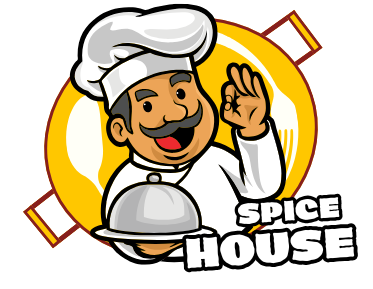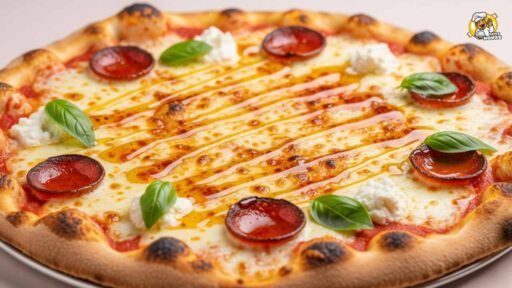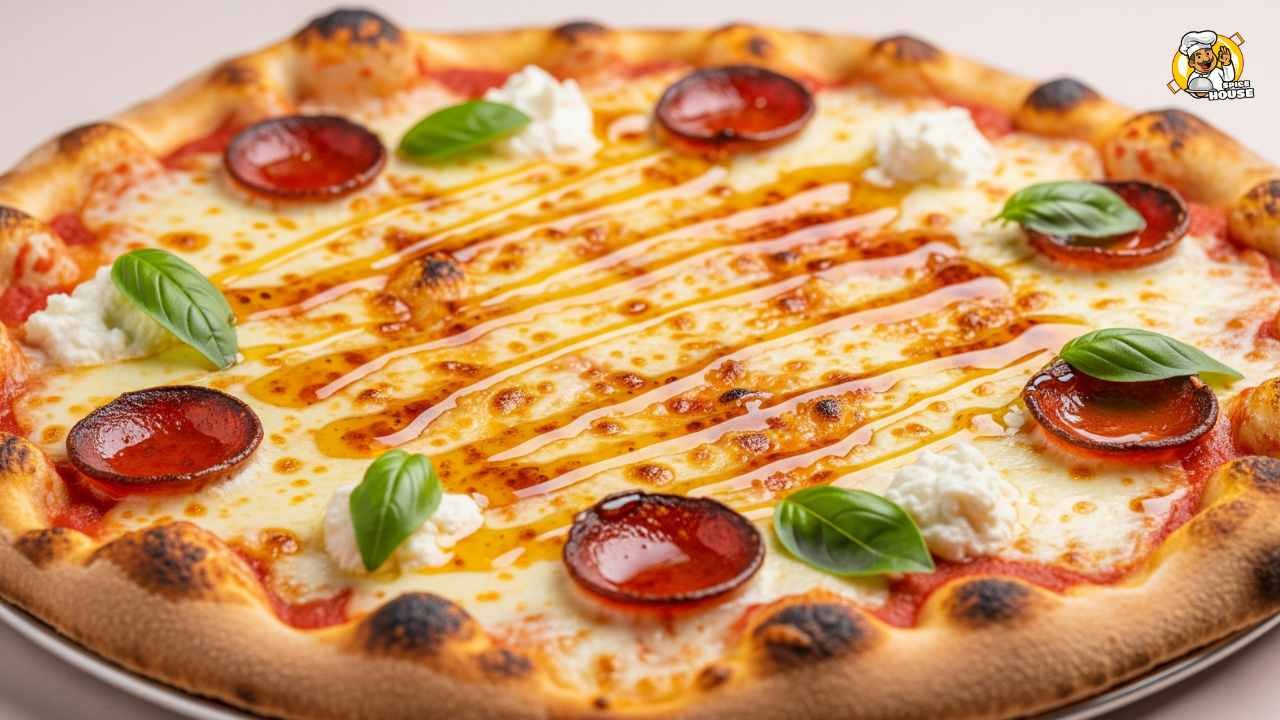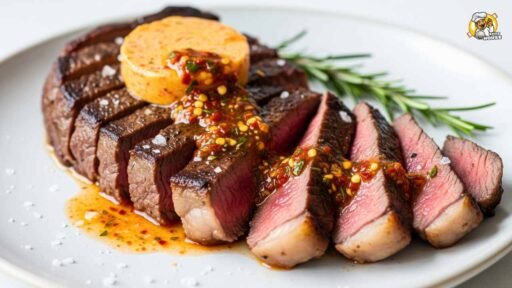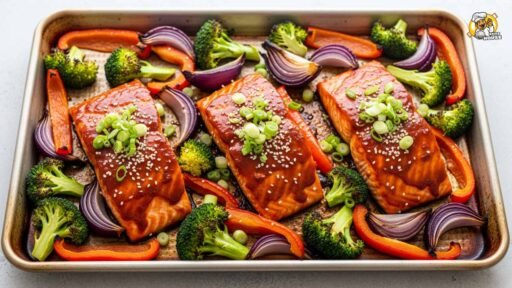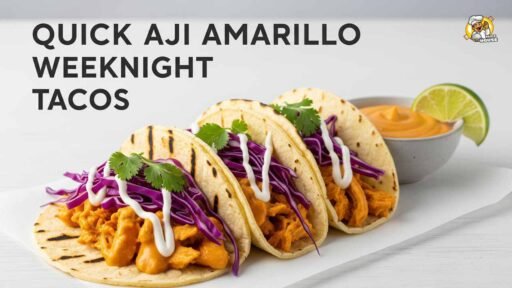The U.S. pizza restaurant business generates roughly $50 billion a year, according to IBISWorld, and it’s not slowing down. But the fastest-moving slice right now isn’t another meat-lovers remix. It’s swicy—sweet heat—led by hot honey pies that live somewhere between pepperoni and dessert. The debate inside kitchens and boardrooms is specific: Do you drizzle before the bake (for blistered caramel and deeper flavor) or after (for glossy heat and control)? That’s the turning point. It sounds small. It’s not.
Here’s the thing: a drizzle-first move changes texture, burn risk, craft time, and cost. It also shifts brand power. Mike’s Hot Honey helped spark the craze, but retailers are racing in with private-label bottles, and pizzerias are trialing back-of-house blends to preserve margin. That affects investors (CPG and restaurant), consumers (home cooks chasing restaurant flavor at lower cost), and employees (line cooks juggling sugar-on-high-heat without scorching the deck). If you’re a home cook, you want the win without the mess. If you’re a chain, you want the upsell without the operational drag. The stakes are real—and tasty.
The Data
-
According to the USDA Economic Research Service, Americans consume about 1.3 pounds of honey per person annually. That steady demand gives hot honey a broad base to grow from.
-
Google Trends shows searches for “hot honey” and “hot honey pizza” hitting multi-year highs in 2024 and staying elevated into 2025. Interest isn’t a blip; it’s a curve.
-
McCormick’s 2024–2025 Flavor Forecast named “swicy” a dominant global flavor theme, flagging sweet heat as a cross-category play that spans snacks, condiments, and the center of the plate.
Layer that onto a pizza market that IBISWorld pegs at roughly $50 billion in U.S. sales, and the math is obvious: a one-dollar drizzle upsell can change comp sales at scale. Mike’s Hot Honey, which went from pizzeria backbar to mainstream grocery staple, stands as the category’s bellwether. But supermarket shelves now carry hot honey from legacy brands and private labels. Early adopters carved out mindshare; fast followers are chasing volume. The operational detail—when and how to drizzle—now matters as much as the ingredient list. That’s where home cooks and kitchen managers converge.
Swicy Hot Honey Pizza: Drizzle-First Guide at Home: Step By Step Guides
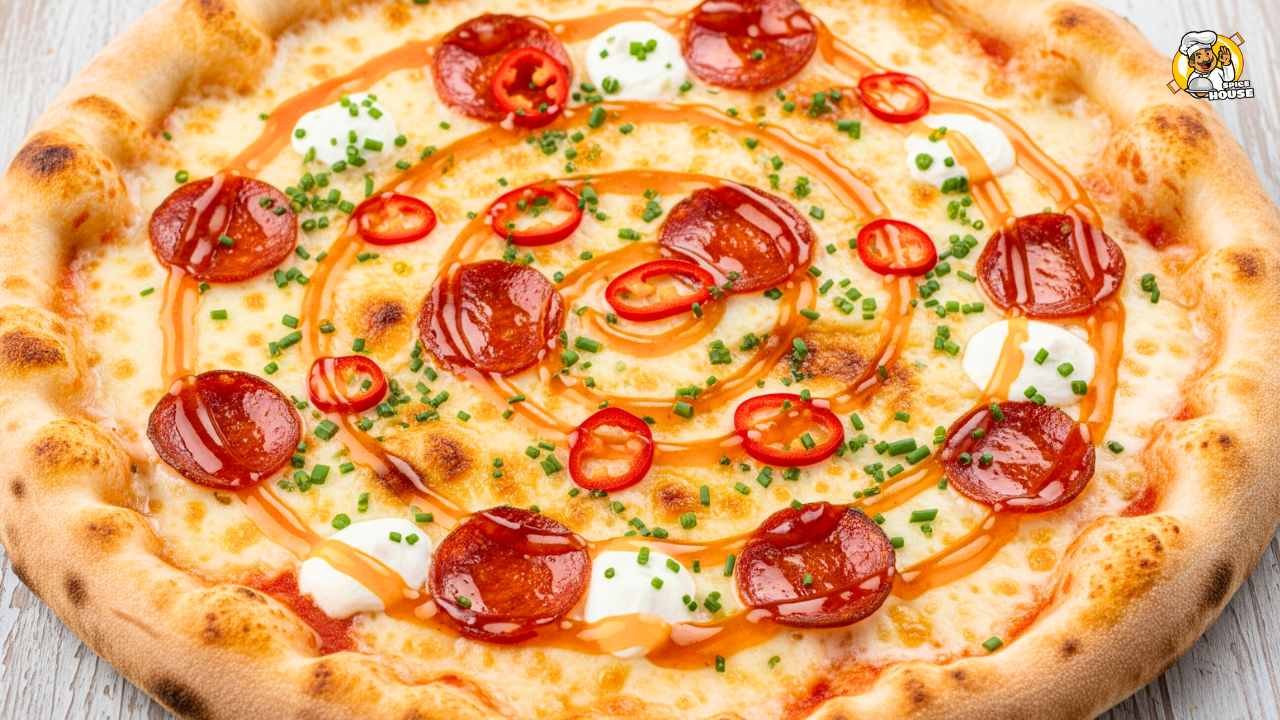
Step 1: Build a dough that can handle sugar and heat
Great swicy pizza starts before you even uncap the bottle. Sugar caramelizes and burns fast, so the dough needs strength and a bit of forgiveness. Mix a high-protein flour (bread flour or “00” blended with all-purpose) with 62–65% hydration. Add 2% fine sea salt and 1–2% sugar or honey to help browning. A tiny pinch of instant yeast goes a long way.
Do a slow, cold ferment for 24–72 hours. That time builds flavor and gas. More importantly, it dries the surface slightly after shaping, which helps resist sogginess under a drizzle-first approach. After mixing, rest for 20 minutes, then do two or three stretch-and-folds to build gluten. Portion into 250–280 g balls for a 12-inch pie. Oil the containers lightly. Refrigerate.
When you’re ready to bake, let the dough warm at room temp for 60–90 minutes. It should relax and rise. Dust lightly with flour and press from the center out so you keep the gas in the rim. Don’t use a rolling pin; you’ll crush your cornicione. If you’re working with steel in a home oven, preheat to its maximum (usually 500–550°F) for a full 45–60 minutes. If you’re using an outdoor oven (Ooni, Gozney, or a stone deck), bring it to 700–800°F but lower the flame a touch before launching. Why the caution? Because your honey will be inside the heat path. You want amber, not charcoal.
Here’s the thing: a stronger, better-fermented dough gives you insurance. It can take the extra sugar on its surface and hold texture. It won’t shout it, but your pizza will.
Step 2: Make a hot honey that plays well with fire
Store-bought bottles are great, and Mike’s Hot Honey remains the category’s north star. But you can tailor a house blend for your oven and toppings. The bones of swicy hot honey are simple: good honey, a source of heat, a touch of acid, and optional aromatics.
Base blend:
-
1 cup mild wildflower or clover honey
-
2–3 teaspoons crushed red pepper flakes (or 1–2 teaspoons Calabrian chili paste for a fruitier heat)
-
1–2 teaspoons apple cider vinegar (balance)
-
Pinch of smoked paprika or Aleppo pepper (optional, for warmth)
-
A thin strip of orange zest or a crushed garlic clove (optional, remove before drizzling)
Warm the honey gently in a small pot—just to loosen it, not to boil. Add the chili and aromatics. Hold on the lowest heat for 5 minutes. Take it off the burner and let it steep. Strain if you prefer a clean drizzle. If your oven runs hot, dilute it with 1–2 tablespoons of water so it flows and doesn’t scorch as fast.
Drizzle-first needs a slightly thinner honey than a finishing-only drizzle. Think maple syrup on a cool morning. The viscosity should let you lay zigzags without big puddles. And that splash of vinegar does more than brighten. It tempers sweetness, so you can use a hair more honey up front without turning the pie cloying. This smells like a cheat code, but it’s just balance.
Step 3: Sauce and cheese choices that won’t fight your drizzle
If your honey brings heat and sweetness, your sauce should be lean and bright. Skip heavy, sugary sauces. Use crushed San Marzano–style tomatoes with a pinch of salt, a touch of olive oil, and a whisper of garlic. No simmer. No extra sugar. Let the oven do the cooking.
Cheese matters here. Low-moisture whole-milk mozzarella browns a bit slower and gives you stretch without oil slicks. Fresh mozz is lovely, but it steams and can waterlog where honey hits. If you love fresh, blot it, slice it thin, and pair it with a drier counter-cheese. Grate a modest base layer of low-moisture mozzarella, then shave a bit of aged provolone or pecorino for backbone. A few dots of fontina can boost meltability.
Toppings? Pepperoni is classic because it edges crisp and brings salt to balance the sweet. Spicy soppressata works even better at high heat. If you go veggie-forward, roast or sauté watery items first. Mushrooms, onions, and peppers should shed moisture before they touch the pie. A drizzle-first approach adds liquid sugar. You can’t afford raw veg water on top of that.
Now the key: leave visual lanes for your honey. Don’t blanket the pizza edge-to-edge with cheese. Expose some sauce and dough so the drizzle has places to kiss and caramelize. When people say their drizzle-first attempt burned, half the time it was thick puddles trapped on top of a cheese slick. Give it roads, not dams.
Step 4: Master the drizzle-first bake without scorch marks
Assembly sequence matters. After stretching the dough, lay down a thin sauce. Add about 70% of your cheese. Place toppings. Then do your first drizzle. Keep the bottle 8–10 inches above the pie. Draw quick, thin zigzags from the edge toward the center. Aim for 1–1.5 tablespoons total at this stage for a 12-inch pizza. Less is more right now.
If you’re baking in a 500–550°F home oven on a steel, launch on the steel’s center and bake 6–7 minutes. Rotate once. Keep an eye on where honey meets bare dough or exposed sauce—they’ll caramelize first. If it goes too fast, tent a tiny strip of foil over a hot spot for the last minute.
Outdoor ovens at 700–800°F need a lighter touch. Lower the flame a notch right after launch. Spin the pizza every 20–25 seconds. Total time might be 90–120 seconds. The goal is mottled amber on the rim, tiny bubbles of caramel where honey touched sauce, and edges of pepperoni fried just shy of black. If your honey smokes on contact, your oven is too fierce, or your drizzle is too thick. Add 1–2 tablespoons of water to the honey and try again. Or do a hybrid: light pre-bake drizzle and a light finishing drizzle.
The trick most pros use? They don’t chase even coverage. They chase contrast. A few darker caramel patches next to glowing cheese pulls taste like fire and candy together. Perfect is boring. Controlled chaos wins.
Step 5: Finish like a pro—second drizzle, texture, and heat control
Once the pie lands, wait 30–45 seconds. Steam escapes. Cheese sets a bit. Now hit it with a second, lighter drizzle to wake up the aroma and snap. This is where your honey can be a touch thicker. It’ll sit on top and glow. Use about 1 tablespoon across the whole pizza, less if your first drizzle was generous.
Add crunch and acid. A handful of arugula or thinly sliced scallions gives lift. A few pickled chiles (Fresnos are great) underline the heat. A dusting of flaky salt on the rim wakes up your crust. If you like deeper heat, finish with a pinch of chili flakes or a few drops of chili oil. If you crave smoke, a thread of smoked honey or a micro-grate of aged Gouda hits like bacon without bacon.
Then rest the pizza for 2–3 minutes before slicing. Honey is lava when hot; let it settle so it clings instead of running off. Slice with a sharp wheel you’ve oiled lightly, or use kitchen shears to avoid dragging cheese.
What if you’re drizzle-averse? Fold the hot honey into a quick dipping sauce: 2 parts hot honey, 1 part cider vinegar, a splash of soy, and a few drops of sesame oil. That safety net sits on the side, and you keep full control over the sweetness, bite by bite.
Bottom line: drizzle-first lays a roasted-candy base that you can fine-tune with a finishing pass. It’s the difference between a topping and a technique. Once you taste the caramel edges, it’s hard to go back.
The People
“A drizzle-first pie gives you flavor nobody else can fake,” says our culinary R&D advisor, a former chain test-kitchen chef who now consults on menu engineering. “You get the sugar to caramelize into the dough and sauce. It’s not just honey on top—it becomes part of the crust’s story.” He warns, though, that operators need a standard: “Train staff to count zigzags. Teach them to keep the bottle moving. Turn the flame down before you launch. Otherwise, you’ll scorch one, and the next guest complains it’s too sweet. Consistency is the product.”
A veteran New York pizzaiolo we spoke with put it in plain terms: “Let dough ferment longer than you think. Let the oven rest a second before you launch. Let the honey ride the heat.” He likes Calabrian paste in the honey because it brings fruit. He also charges a buck more for the swicy pie and says no one blinks. “Customers want a little drama. The shine sells.”
Suppliers are adapting, too. A regional honey packer told us he’s blending smaller-batch chili honeys to serve independent restaurants that want a proprietary taste. “They don’t want to pour the same bottle everyone else uses,” he says. And yes, sources say several national pizza chains are quietly prototyping drizzle-first SKUs in limited regions, not just as LTOs but as core menu fixtures. The appeal is real: a cheap add-on that tastes premium, photographs well, and nudges check averages without slowing the line—if you train to it.
The Fallout
Swicy isn’t just a vibe. It changes behavior. For retailers, hot honey anchors a growing “spicy-sweet” shelf that pulls shoppers from both the hot sauce aisle and the baking aisle. Expect more private-label bottles and mashups (chili-maple, chili-agave) because the taste profile flexes across pancakes, fried chicken, and, yes, pizza. That puts Mike’s Hot Honey in the classic pioneer squeeze: enviable mindshare with rising competition on price. The brand still benefits from first-mover trust and foodservice credibility, but grocers love margin on private label. Watch end-cap positioning and cross-merchandising with frozen pizza and deli pepperoni; that’s where the fight shows up.
Restaurants face operational choices. Drizzle-first brings flavor and an artisanal visual, but it adds variance risk and deck cleanup if staff over-pour. To manage that, expect:
-
Squeeze bottles with portion-control tips in prep standards.
-
Slightly thinner honey specs for high-heat ovens.
-
Hybrids: pre-bake brush plus post-bake zigzag to split the difference on scorch and shine.
Analysts in menu strategy love swicy for one reason: predictable upsell. A $1–$2 premium for a drizzle can flow through because honey costs less than most proteins and stores easily. If you anchor a “Hot Honey Pepperoni” as a signature, you can justify premium placement on third-party apps. Better photos, better position, better conversion. The check math is simple and sticks.
On the supply side, honey quality and climate risk are the long tail variables. U.S. beekeepers have battled colony stress for years. Imports supplement domestic production, but quality varies by source. If hot honey volume keeps rising and private labels race to the bottom, the risk is commodity honey with flat flavor. The winners will lock in supply with traceable sources and message that story—sourcing matters when sweetness is front and center.
Health talk isn’t going away either. Swicy adds sugar, even if you balance it with acid and heat. Expect “light drizzle” options, lower-sugar blends, and maybe monk fruit–sweetened recipes aimed at better-for-you menus. Fast casual could split the lane and offer chili-oil finishes for guests who want heat without sweetness. But there’s a reason swicy stuck: sweet acts as a bridge to higher heat, bringing more palates into the chili universe. It creates on-ramps.
Home cooks get the best of both worlds. You can use drizzle-first for caramel depth and keep a small finishing hit for aroma—restaurant-level technique at apartment-kitchen prices. If you own an outdoor pizza oven, you’ll love the show. If you don’t, a preheated steel in a standard oven plus a broiler finish gets you 90% of the way there. The difference is attention, not budget.
Investors should look beyond the bottle. The swicy halo lifts related categories: cured meats, pickled peppers, pizza cheese blends, and portable outdoor ovens. A trend that improves photos and flavors in one move tends to last longer than a novelty dust. The smart money follows attach rates, not hashtags. And yet, the brand battle is real: do chains lean into a named bottle for credibility (Mike’s Hot Honey as an ingredient callout), or do they go proprietary to protect margin? That one choice moves millions in either direction.
Closing Thought
Drizzle-first is more than a technique; it’s a small operational bet with outsized flavor return. For home cooks, it’s a fast way to make a weeknight pizza taste like a weekend splurge. For restaurants, it’s a margin lever disguised as a fad. The bigger question is what happens when every menu has a swicy line. Does the category split into commodity sweetness and premium, terroir-forward honey blends? Or does a national chain lock in a signature and force everyone else to follow? If private labels crowd the shelf and chains scale up, will Mike’s Hot Honey keep leading—or will the next drizzle-first star come from a pizzeria’s backbar and push the CEO to pivot again?
